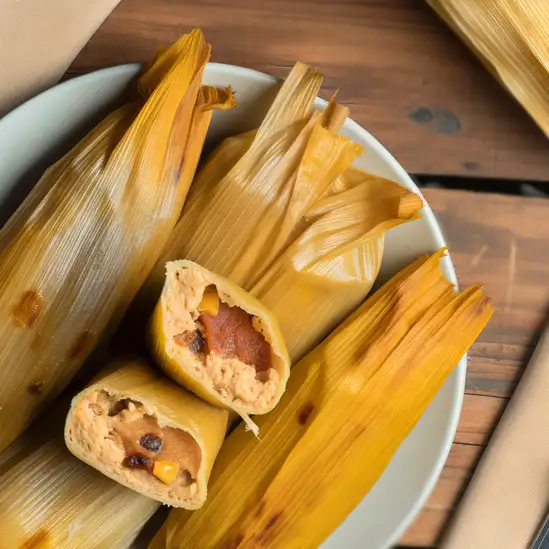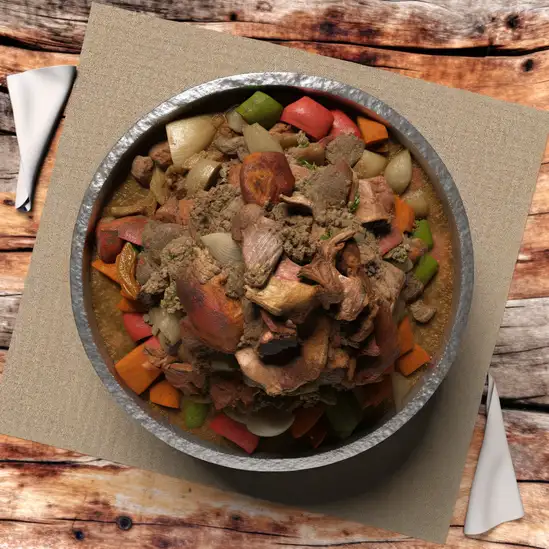



San Salvador de Jujuy has this incredible,laid-back energy that immediately pulls you in. It’s the kind of place where the colors seem brighter—the terracotta rooftops,the vibrant murals,and the deep blue sky all blend into a warm,inviting palette. Walking through its streets,you’ll hear the lively chatter of locals,the occasional strum of a guitar,and the distant hum of bustling markets. There’s a genuine warmth in the air,not just from the sun but from the people who greet you with open smiles and a relaxed pace that makes you want to slow down and savor the moment. The city’s character is deeply tied to its Andean roots,which you can feel in the architecture,the traditional crafts,and the flavors that fill the air. Imagine the scent of freshly baked empanadas mingling with the earthy aroma of roasted coffee from a nearby café. Sitting in a plaza,you might catch the faint sound of folk music drifting from a local gathering,while vendors sell handwoven textiles bursting with color and history. What makes San Salvador de Jujuy truly special is how it balances its rich cultural heritage with a youthful,creative spirit. It’s a place where ancient traditions meet modern life,where you can explore colonial churches one moment and discover quirky art galleries the next. If you’re craving a travel experience that feels authentic and alive,this city will surprise you with its charm and leave you wanting to come back for more.
The information on this page is currently being reviewed by Tripkliq and should be used as a guide only
Eng word: Hello
Eng pronunciation: OH-lah
Local language: Hola
Eng word: Goodbye
Eng pronunciation: ah-DYOS
Local language: Adiós
Eng word: Thank you
Eng pronunciation: GRAH-syahs
Local language: Gracias
Eng word: How much
Eng pronunciation: KWAN-toh KWEH-stah
Local language: ¿Cuánto cuesta?
Eng word: Toilet
Eng pronunciation: BAH-nyoh
Local language: Baño
Eng word: Help me
Eng pronunciation: ah-YOO-dah-meh
Local language: Ayúdame
Eng word: Yes
Eng pronunciation: SEE
Local language: Sí
Eng word: No
Eng pronunciation: NO
Local language: No
Eng word: Excuse me
Eng pronunciation: pehr-DOHN
Local language: Perdón
San Salvador de Jujuy was officially founded on April 19,1593, by Francisco de Argañarás y Murguía. It was established as a strategic settlement to connect the trade routes between the Viceroyalty of Peru and the Río de la Plata.
The Cabildo, or town hall, is one of the oldest colonial buildings in the city. It served as the administrative and political center during the colonial period and is now a museum showcasing the city's rich history.
San Salvador de Jujuy played a significant role in the Argentine War of Independence. The city was part of the famous 'Éxodo Jujeño,' a strategic retreat led by General Manuel Belgrano in 1812 to deny resources to the advancing Spanish forces.
The Cathedral of San Salvador de Jujuy, built in the 18th century, is a stunning example of colonial architecture. It houses the Holy Cross of Miracles, a revered religious artifact in the region.
San Salvador de Jujuy is the gateway to the Quebrada de Humahuaca, a UNESCO World Heritage Site. This region has been a cultural crossroads for thousands of years, blending indigenous and colonial influences.
The city is known for its strong connection to gaucho culture, which is celebrated through traditional music, dance, and festivals. The gauchos are an iconic symbol of Argentina's rural heritage.
San Salvador de Jujuy is home to the first Argentine flag raised in the northern provinces. This flag, designed by General Manuel Belgrano, is a symbol of the country's fight for independence.
Plaza Belgrano is the heart of the city and a historic site where many important events took place. It is surrounded by significant landmarks, including the Cabildo and the Cathedral.
San Salvador de Jujuy is famous for its vibrant Carnaval celebrations, which blend indigenous and Spanish traditions. The festivities include colorful costumes, music, and dances that attract visitors from around the world.
In San Salvador de Jujuy, the most common Power Adaptor is Type C, Type I.



Corn dough filled with meat or vegetables, wrapped in corn husks and steamed, offering a delicious and traditional flavor.

A traditional Andean dish where meats and vegetables are cooked underground with hot stones, infusing them with unique flavors.

A hearty stew made with corn, beans, potatoes, and various meats, often enjoyed during national holidays and celebrations.

A simple yet delicious dish of fresh corn served with cheese, often enjoyed as a snack or side dish.

A dish made from ground corn mixed with cheese and spices, wrapped in corn leaves and steamed, often served as a side or snack.

These are savory pastries filled with a variety of ingredients, commonly including meat, cheese, or vegetables, and are a staple in Jujuy's cuisine.

A peanut soup that combines ground peanuts with vegetables and spices, creating a rich and comforting dish.
If you ever find yourself dreaming of a place where history hums through the cobblestone streets and the air carries a hint of roasted coffee and fresh empanadas,Salta is that kind of city. It’s got this warm,inviting vibe that wraps around you like a cozy blanket,yet it buzzes with a lively energy that keeps you curious. Walking through the main square,you’ll hear the gentle strum of guitars mingling with the chatter of locals sipping on their mate,and the colonial architecture stands proud,painted in soft pastels that glow under the golden sun.
Salta’s charm lies in its blend of old and new — the city feels deeply rooted in its indigenous and Spanish heritage,but it’s also alive with contemporary art,music,and vibrant markets. The scent of freshly baked pastries drifts from the bakeries,and if you’re lucky,you’ll catch the aroma of grilled meats from a nearby parrilla. The people here are warm and genuine,always ready to share a story or recommend a local wine from the nearby Cafayate vineyards.
What really stays with you is the way the surrounding Andes mountains cradle the city,their rugged peaks contrasting beautifully with the delicate colonial details. Whether you’re wandering through the Museo de Arqueología or sipping a glass of Torrontés as the sun sets,Salta feels like a place where time slows down just enough for you to soak it all in — the colors,the sounds,the tastes — and leave with a heart full of memories.
If you ever find yourself craving a place where the desert feels alive and the sky stretches endlessly,San Pedro de Atacama is where you want to be. The moment you step into this small town,there’s a quiet magic in the air—a blend of ancient earth and modern curiosity. The dusty streets hum softly with the chatter of locals and travelers alike,while the crisp,dry air carries the faint scent of roasted coffee and spices from cozy cafés. It’s a place that invites you to slow down,breathe deeply,and soak in the vastness around you.
What’s truly captivating is how the landscape seems to tell stories. By day,the sun paints the salt flats and red rock formations in golden hues,and at night,the sky explodes with stars so bright it feels like you could reach out and touch them. The town itself is a charming mix of adobe buildings and colorful murals,where you can wander through artisan markets filled with handwoven textiles and silver jewelry,each piece echoing the rich indigenous heritage.
Food here is a delightful surprise—imagine savoring a plate of quinoa-stuffed empanadas or sipping on a warm cup of herbal tea made from local desert plants,all while watching the sun dip behind the Andes. San Pedro de Atacama isn’t just a destination; it’s a feeling of connection—to nature,history,and a community that welcomes you with open arms and a genuine smile.
Uyuni feels like stepping into another world,where the vastness of the salt flats stretches endlessly under a sky so wide and blue it almost feels unreal. The moment you arrive,there’s this quiet hum in the air—a mix of wind brushing over the white salt crust and distant laughter from locals. It’s a place that invites you to slow down and soak in the surreal beauty around you. Walking across the Salar de Uyuni,especially after a rain,you’ll find yourself surrounded by a giant mirror reflecting the clouds,making it feel like you’re walking on the sky itself.
The town itself is small but full of heart. You’ll notice the colorful markets where vendors sell everything from handwoven blankets to fresh,roasted corn. The smell of grilled meats and spices drifts from local eateries,tempting you to try traditional Bolivian dishes like salteñas—those juicy,savory pastries that are perfect for a quick,flavorful bite. The people here are warm and welcoming,proud of their heritage and eager to share stories about the salt flats,the trains,and the nearby volcanoes.
At night,Uyuni transforms again. The stars explode overhead in a way you rarely see anywhere else,and the cool desert air carries a peaceful stillness. It’s a place that stays with you—not just for the breathtaking landscapes but for the feeling of being part of something vast and timeless. If you’re up for an adventure that’s both humbling and magical,Uyuni is waiting.
La Paz feels like stepping into a vibrant tapestry woven from ancient traditions and modern energy. Perched high in the Andes,the city’s dramatic skyline is a jagged silhouette of colorful houses climbing steep hillsides,with the snow-capped Illimani mountain watching over everything like a silent guardian. Walking through its bustling streets,you’ll hear the lively chatter of vendors,the rhythmic clatter of street markets,and the occasional whistle of a cable car gliding overhead,connecting neighborhoods in a way that feels both futuristic and charmingly local.
The air carries a mix of scents—freshly brewed coca tea,sizzling street food like salteñas (Bolivian empanadas bursting with savory goodness),and the earthy aroma of nearby markets overflowing with vibrant fruits and spices. There’s a warmth in the people here,a genuine friendliness that invites you to slow down and soak in the stories behind every handcrafted textile or colorful mural.
What makes La Paz truly unforgettable is its blend of contrasts:ancient Aymara culture thriving alongside urban life,traditional rituals unfolding amid modern cafes and art galleries. Whether you’re wandering through the Witches’ Market,where you can find everything from dried llama fetuses to herbal remedies,or sipping coffee in a cozy café overlooking the city’s dizzying depths,La Paz leaves you with a sense of wonder and connection. It’s a place that challenges your perspective and rewards your curiosity at every turn.
If you ever find yourself craving a place where the desert meets the sea in the most unexpected harmony,Iquique is where you want to be. The moment you step into this northern Chilean city,there’s a laid-back energy that wraps around you like a warm breeze. The sun feels different here—brighter,almost golden—and it casts a shimmering glow over the Pacific Ocean that stretches endlessly along the coast. Walking along the boardwalk,you’ll hear the rhythmic crash of waves mingling with the distant chatter of locals and the occasional call of seabirds. It’s a sensory cocktail that instantly relaxes you.
What’s really captivating about Iquique is its blend of old and new. The historic architecture in the city center,with its colorful facades and intricate iron balconies,tells stories of a rich mining past,while the modern beachfront buzzes with surfers and kiteboarders slicing through the wind. The smell of fresh seafood grills drifting from open-air markets tempts you to try ceviche or the local favorite,chupe de mariscos—a hearty,comforting seafood stew that tastes like the ocean itself.
But beyond the sights and flavors,it’s the people who make Iquique unforgettable. There’s a genuine warmth in their smiles and a relaxed pace that invites you to slow down and savor the moment. Whether you’re wandering through the vibrant fish markets,catching a sunset from the cliffs,or simply sipping a coffee in a sunlit café,Iquique feels like a place where time stretches just enough for you to breathe and belong.
The capital city of Paraguay,Asunción offers a mix of colonial history,modern culture,and access to the Paraguay River for scenic views and activities.
ExploreScammers install skimming devices on ATMs to steal card information from unsuspecting users, especially in tourist-heavy areas.
Tourists may be given counterfeit bills or unfavorable exchange rates when exchanging money at unofficial locations or with street vendors.
Scammers may pose as representatives of local charities, pressuring tourists to donate money to causes that do not exist.
Vendors may sell fake 'authentic' handicrafts or souvenirs at inflated prices, claiming they are handmade by local artisans.
Scammers pose as tour guides offering cheap or exclusive tours, but they provide subpar services or abandon tourists after taking payment.
Some taxi drivers may overcharge tourists by taking longer routes or not using the meter, especially if the tourist is unfamiliar with the area.
Crowded areas, such as markets or bus terminals, are hotspots for pickpockets who target distracted tourists.
Street performers or artists may demand payment after engaging tourists, even if the tourists did not explicitly agree to pay.
Argentina has strict laws regarding the possession, use, and trafficking of illegal drugs. Possession of small amounts of drugs for personal use has been decriminalized in some cases, following a 2009 Supreme Court ruling, but this is applied on a case-by-case basis and does not guarantee immunity from legal consequences. Tourists should avoid carrying or using any illegal substances, as penalties for drug-related offenses can be severe. Cannabis use is not widely accepted, and recreational use remains illegal. Always exercise caution and respect local laws.
In San Salvador de Jujuy, as in the rest of Argentina, smoking is regulated under the National Tobacco Control Law (Law No. 26,687). Smoking is prohibited in enclosed public spaces, workplaces, healthcare facilities, educational institutions, and on public transportation. Designated smoking areas are generally not allowed in enclosed spaces. Tourists should also be mindful of local cultural norms and avoid smoking in crowded outdoor areas or near children.
Vaping is subject to similar restrictions as smoking in Argentina. The sale, advertising, and importation of electronic cigarettes and vaping devices that contain nicotine are regulated by the National Administration of Drugs, Foods, and Medical Devices (ANMAT). While vaping is not explicitly banned in public spaces, it is generally treated with the same restrictions as smoking. Tourists should avoid vaping in enclosed public spaces and follow local regulations.
What are other people saying about San Salvador de Jujuy?
Recent Social posts about San Salvador de Jujuy
There is nothing to show you for now.